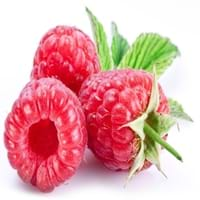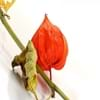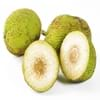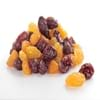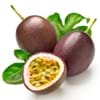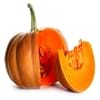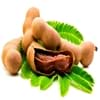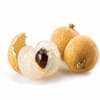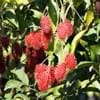तलस्थ चेरी और रास्पबेरी
लाभ
स्वास्थ्य सुविधाएं
एंटी ऑक्सीडेंट गुण, सूजन को काम करने के लिए, कैंसर की रोकथाम, स्वस्थ कोलेस्ट्रॉल के स्तर को बनाए रखता है, रक्त परिसंचरण समस्याओं को कम कर देता है, खांसी, बुखार और गले में खराश के उपचार, उच्च रक्तचाप के इलाज
कैंसर की रोकथाम, हार्ट को स्वस्थ्य रखता है, धब्बेदार अध: पतन रोकता, रक्त परिसंचरण समस्याओं को कम कर देता है
सामान्य लाभ
दमा का इलाज, मोतियाबिंद का उपचार, हेपेटाइटिस का उपचार, धब्बेदार अध: पतन का उपचार, न्यूरोडिजेनेरेटिव रोगों का उपचार
सूजन को काम करने के लिए, रक्त शर्करा के स्तर को नियंत्रित करता है, पाचन सहायता, आंख की देखभाल, वजन घटाने में मदद करता
त्वचा पे लाभ
गठिया और सूजन का उपचार, त्वचा की सूजन का इलाज
बुढ़ापे मै लाभ, रंग हल्का कर देता है
बालों पे लाभ
अनजान
मॉइस्चराइजर के रूप में उपयोग, बालों का बड़ना नियंत्रित करता है, चमकदार बाल
एलर्जी
एलर्जी के लक्षण
लागू नहीं
साँस लेने में कठिनाई, खुजली, हीव्स, खुजली, नाक बंद, बहती नाक, छींक आना, गीली आखें, घरघराहट
दुष्प्रभाव
उच्च रक्तचाप, वेंट्रीकुलर टेचिकार्डिया
एलर्जी की प्रतिक्रिया
उपयुक्त है
गर्भवती महिला
Yes
Yes
स्तनपान कराने वाली महिलाएं
Yes
Yes
खाने का अच्छा समय
दोपहर में एक नाश्ते के रूप में, ताजा खाने के लिए, किसी भी अन्य खाद्य पदार्थों के साथ मिश्रण से बचने, भोजन के बाद ना खाए, सुबह के समय (दोपहर का भोजन करने से पहले), खाली पेट से बचने
नाश्ता (या खाली पेट) के रूप में लिए जाने के लिए उपयुक्त, दोपहर में एक नाश्ते के रूप में, भोजन के बाद ना खाए, सुबह के समय (दोपहर का भोजन करने से पहले)
पोषण
सेवन मात्रा
१०० ग्राम
१०० ग्राम
कार्बोहाइड्रेट
13.30 ग्राम
36
11.94 ग्राम
99+
रेशा
0.50 ग्राम
40
6.50 ग्राम
6
चीनी
3.90 ग्राम
99+
4.42 ग्राम
99+
प्रोटीन
2.30 ग्राम
8
1.20 ग्राम
19
कार्बोहाइड्रेट मे अनुपात में प्रोटीन
0.17
10
0.10
15
विटामिन
विटामिन ए (रेट्नोल)
150.00 माइक्रोग्राम
5
2.00 माइक्रोग्राम
33
विटामिन बी 1 (थायमिन)
0.11 मिलीग्राम
3
0.03 मिलीग्राम
30
विटामिन बी 2 (राइबोफ्लेविन)
0.04 मिलीग्राम
23
0.04 मिलीग्राम
24
विटामिन बी 3 (नियासिन)
2.80 मिलीग्राम
1
0.60 मिलीग्राम
26
विटामिन बी 5 (पैंटोथैनिक एसिड)
उपलब्ध नहीं है
0.33 मिलीग्राम
11
विटामिन बी -6 (पाइरियोडॉक्सिन)
उपलब्ध नहीं है
0.06 मिलीग्राम
32
विटामिन B9 (फोलिक एसिड)
उपलब्ध नहीं है
21.00 माइक्रोग्राम
13
विटामिन सी (एस्कॉर्बिक एसिड)
28.00 मिलीग्राम
32
26.20 मिलीग्राम
35
विटामिन ई (टोकोफेरोल)
0.50 मिलीग्राम
19
0.87 मिलीग्राम
12
विटामिन (फ़्यल्लोचिनोने)
उपलब्ध नहीं है
7.80 माइक्रोग्राम
10
लाइकोपीन
उपलब्ध नहीं है
0.00 माइक्रोग्राम
9
ल्यूटिन और ज़ेआक्शंतहीं
उपलब्ध नहीं है
136.00 माइक्रोग्राम
7
चोलिने
2.00 माइक्रोग्राम
30
12.30 माइक्रोग्राम
3
वसा
0.00 ग्राम
99+
0.65 ग्राम
12
खनिज पदार्थ
पोटैशियम
170.00 मिलीग्राम
99+
151.00 मिलीग्राम
99+
लोहा
1.30 मिलीग्राम
11
0.69 मिलीग्राम
18
सोडियम
उपलब्ध नहीं है
1.00 मिलीग्राम
20
कैल्शियम
12.00 मिलीग्राम
29
25.00 मिलीग्राम
18
मैग्नीशियम
8.00 मिलीग्राम
27
22.00 मिलीग्राम
11
जस्ता
0.10 मिलीग्राम
23
0.42 मिलीग्राम
6
फास्फोरस
39.00 मिलीग्राम
9
29.00 मिलीग्राम
18
मैंगनीज
0.40 मिलीग्राम
9
0.67 मिलीग्राम
5
तांबा
0.10 मिलीग्राम
22
0.09 मिलीग्राम
24
सेलेनियम
उपलब्ध नहीं है
0.20 माइक्रोग्राम
15
वसायुक्त अम्ल
ओमेगा -3s
उपलब्ध नहीं है
126.00 मिलीग्राम
5
ओमेगा 6s
उपलब्ध नहीं है
249.00 मिलीग्राम
7
स्टेरोल
पानी की मात्रा
उपलब्ध नहीं है
85.75 ग्राम
35
राख
0.80 ग्राम
13
0.46 ग्राम
29
कैलोरी
आहार की मात्रा
१०० ग्राम
१०० ग्राम
छिलका के साथ ताजा फल में कैलोरी
77.00 किलो कैलोरी
9
53.00 किलो कैलोरी
21
छिलका के बिना ताजा फल में कैलोरी
उपलब्ध नहीं है
उपलब्ध नहीं है
जमे हुए फार्म में कैलोरी
उपलब्ध नहीं है
52.00 किलो कैलोरी
13
सूखे रूप में कैलोरी
उपलब्ध नहीं है
363.00 किलो कैलोरी
9
डिब्बाबंद रूप में कैलोरी
उपलब्ध नहीं है
91.00 किलो कैलोरी
8
खानो मैं कैलोरी
रस में कैलोरी
60.00 किलो कैलोरी
22
68.00 किलो कैलोरी
18
जाम में कैलोरी
238.00 किलो कैलोरी
22
150.00 किलो कैलोरी
33
पाई में कैलोरी
320.00 किलो कैलोरी
14
169.00 किलो कैलोरी
99+
विशेषताएँ
प्रकार
फल सब्जी
बेरी
परिपक्व ऋतु
वसंत, गर्मी
गर्मी
किस्मों
फ़यसलिस फ्रांचेतिइ, फ़यसलिस परंोसा, फ़यसलिस पेरुवीयना, फ़यसलिस हेटरओफाइल्ला और फ़यसलिस फिलाडेल्फ़ीका
आमिटी, ऑगस्ट रेड, बाय्न, कंबी, केरोलाइन, कॉमेट, दीनकुम, डॉर्मन रेड, लॅतम, मीकेर, ब्लॅक हॉक, हयदा, लॉरन, मीकेर और लॅतम
बीजरहित वैराइटी
No
No
रंग
चमकीला पीला, नारंगी
काली, बैंगनी, लाल, पीला
अंदर का रंग
नारंगी
गुलाबी
आकार
गोल
चोटीदार
बनावट
रसीला
रसीला
स्वाद
लागू नहीं
मीठा
मूल देश
चिली, पेरू
यूरोप, उत्तरी एशिया
पर बढ़ता है
झाड़ियाँ
पेड़
खेती
मिट्टी के प्रकार
लागू नहीं
रेतीली दोमट
मृदा पीएच
5-6.1
5.8-6.5
वातावरण की परिस्थितियाँ
लागू नहीं
सर्दी
तथ्य
के बारे में तथ्य
उपलब्ध नहीं है
- रसभरी (रास्पबेरी) के पौधे दो प्रकार के होते हैं।
- बाजार में आज इसका जैम एक लोकप्रिय उत्पाद के रूप में प्रयोग में लाया जा रहा है।
- इसकी २०० से ज्यादा प्रजातियां हैं।
मादक पेय पदार्थों में
वाइन
No
Yes
बीयर
Yes
Yes
स्पिरिट्स
No
Yes
कॉकटेल
Yes
Yes
उत्पादन
शीर्ष निर्माता
लागू नहीं
रूस
दूसरे देश
लागू नहीं
आज़रबाइजान, कनाडा, मेक्सिको, पोलैंड, सर्बिया, स्पेन, यूक्रेन, यूनाइटेड किंगडम, संयुक्त राज्य अमेरिका
शीर्ष आयातक
नीदरलैंड्स
संयुक्त राज्य अमेरिका
शीर्ष निर्यातक
कोलम्बिया
पोलैंड
वैज्ञानिक नाम
वानस्पतिक नाम
फिलस पेरूविणा
रुबूस इडाइअस
पर्याय
अलकेकेंगी, हेर्सचेल्लिया और पेंटफितरूम
उपलब्ध नहीं है
श्रेणीविभाजन
डोमेन
यूकेरिया
यूकेरिया
राज्य
प्लाटै
प्लाटै
सुबकिंगडॉम
त्रचेओबेइन्ता
त्रचेओबेइन्ता
विभाजन
माग्नोलियोफायत
माग्नोलियोफायत
क्लास
मग्नोलियोप्सिडा
मग्नोलियोप्सिडा
उपश्रेणी
आस्टेरिडए
रोसइदै
ऑर्डर
सोलनलेस
रोसलेस
फॅमिली
सोलनसए
रोसासए
जाति
फयसालिस
रूबस
प्रजाति
फयसालिस
र. इडाइअस
जेनेरिक ग्रुप
उपलब्ध नहीं है
गुलाब का फूल
|
||
|
||
|

